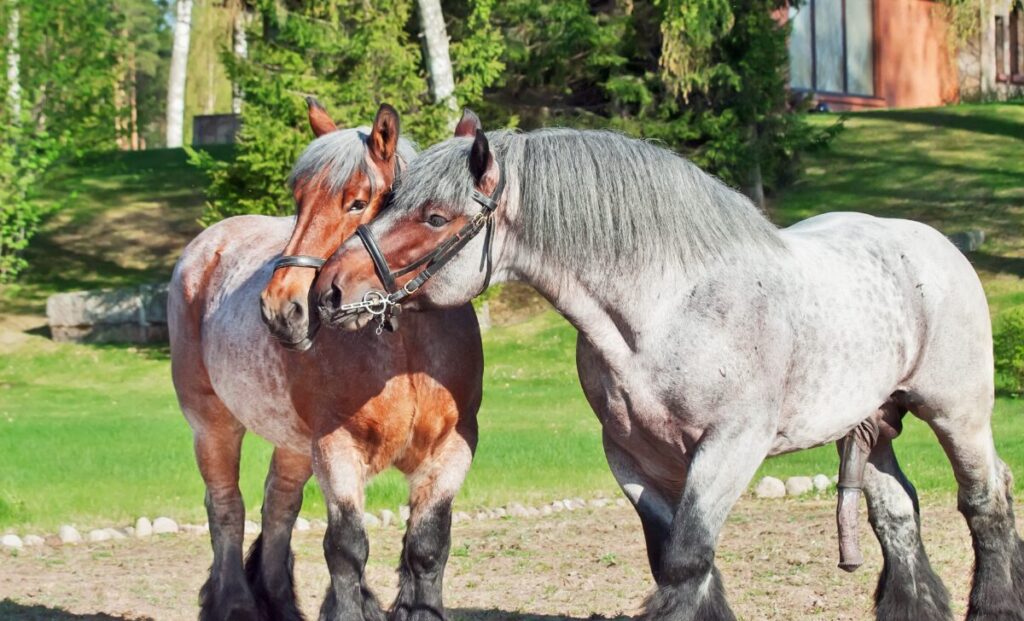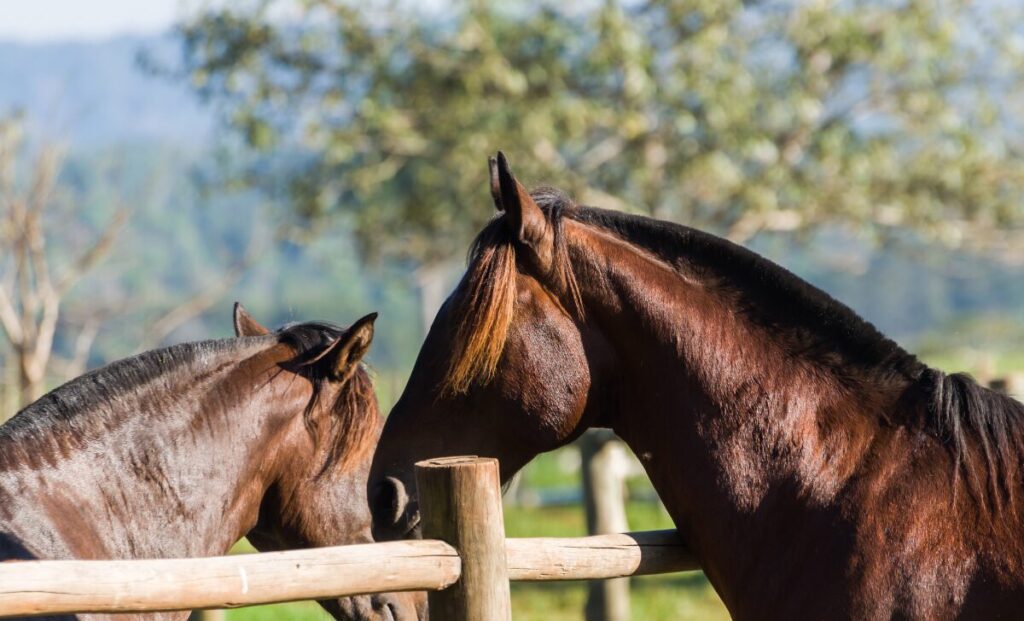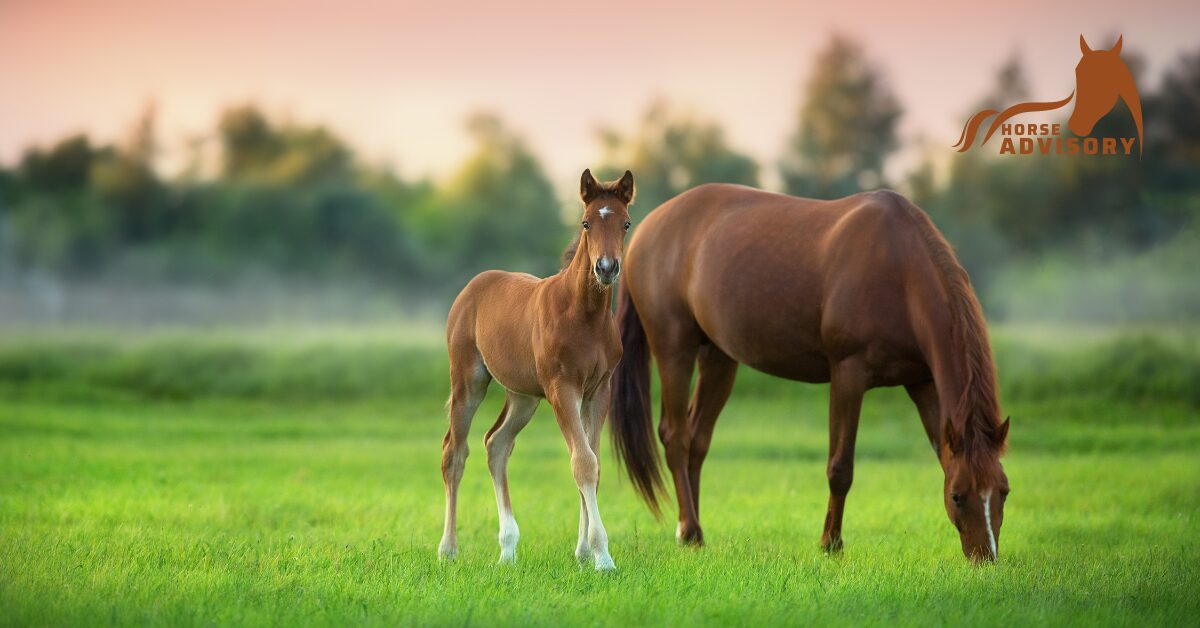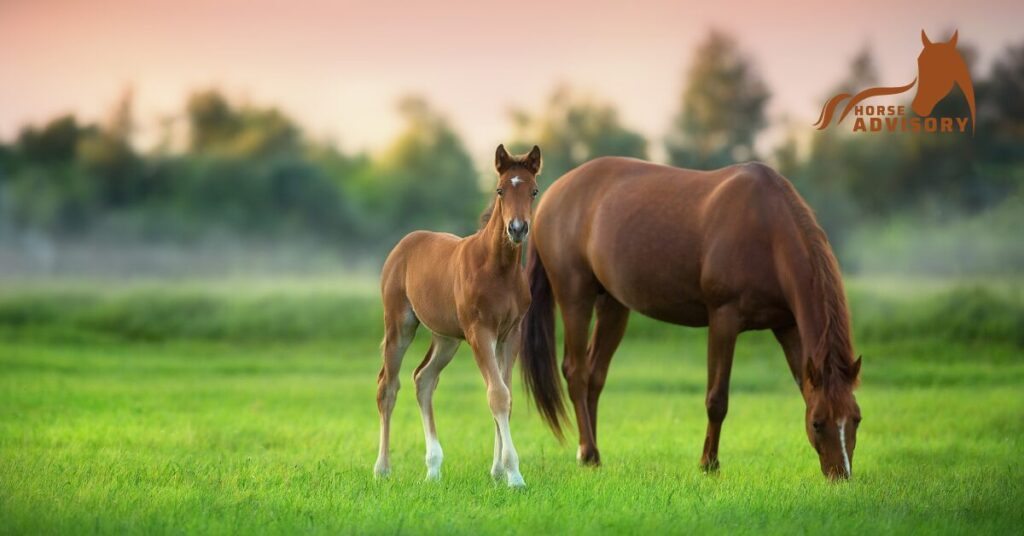Arabian horses hold a revered place in equine breeding due to their exceptional beauty, intelligence, and endurance. Selecting the right Arabian stallion and mare for breeding is a critical decision that influences the quality and traits of future generations. This blog post aims to guide readers through the essential considerations in choosing the ideal Arabian breeding pair, ensuring not only aesthetic and performance excellence but also the preservation of this noble breed’s legacy.
The Importance of Arabian Horse Breeding
Arabian horse breeding holds immense cultural, historical, genetic, and economic significance, making it one of the most valued practices in the equine world. Steeped in tradition, Arabian horses have been cherished for centuries, particularly by the Bedouin tribes of the Arabian Peninsula, who relied on them for transportation, companionship, and survival in harsh desert conditions. Their enduring bond with humans has shaped the Arabian horse into a breed renowned for its loyalty, intelligence, and resilience.
1. Cultural and Historical Significance:
The Arabian horse is deeply intertwined with the culture and history of the Middle East, where it was considered a gift from the gods and a symbol of nobility, honor, and wealth. Bedouin tribes, who prized the Arabian for its ability to thrive in the desert, selectively bred these horses for speed, endurance, and beauty. Over time, the Arabian horse became a symbol of prestige, respected and admired by royalty and equestrians worldwide. Its historical impact is profound, as it played a vital role in wars, trade, and exploration throughout ancient and medieval times, often revered as one of humanity’s closest animal companions.
2. Contribution to Equine Genetics:
Arabian horses are a foundational breed, contributing significantly to the development of many modern horse breeds. Their genetic legacy is unparalleled, with their bloodlines improving key traits in breeds across the globe. Known for their stamina, agility, and refined conformation, Arabians have been used to enhance speed, endurance, and beauty in horses such as Thoroughbreds, Quarter Horses, and Morgans. Their compact size, strong bone structure, and efficient cardiovascular system make them incredibly durable, capable of thriving in various disciplines, from endurance racing to dressage.
Arabian horses are also noted for their prepotency, meaning they reliably pass on their superior traits to their offspring, even when bred with non-Arabian horses. This trait has helped shape the evolution of countless horse breeds, enhancing not only physical characteristics but also temperamental qualities like intelligence, loyalty, and trainability.
3. Economic Importance:
Breeding Arabian horses also has significant economic implications. Arabian horse shows, competitions, and racing events attract global attention, where the breed’s grace, charisma, and athleticism are highly sought after. The elegance and beauty of Arabian horses make them stand out in various equestrian sports and competitions, often leading to increased demand for purebred Arabians. This economic potential extends beyond just competitive events; Arabian horses are also highly valued for their roles in breeding programs, where their ability to improve other breeds makes them a lucrative investment for breeders and horse enthusiasts.
The Arabian’s versatility makes it suitable for a variety of equestrian disciplines, from endurance riding to pleasure riding, further increasing its market value. The breed’s rich heritage, combined with its beauty and performance capabilities, ensures that Arabian horse breeding continues to be a respected and economically rewarding venture. High-quality breeding programs not only preserve the Arabian horse’s storied lineage but also contribute to its enduring presence in equestrian culture.

History of Arabian Horse Breeding
The history of Arabian horse breeding is one of the most ancient and culturally significant chapters in the equine world, dating back thousands of years. The Arabian horse, with its distinct beauty, endurance, and loyalty, has evolved alongside human civilization, becoming a cherished and revered breed across different regions and cultures. From its early origins in the deserts of the Arabian Peninsula to its global influence on modern horse breeds, the Arabian horse has a long and storied history.
1. Origins in the Arabian Peninsula:
The Arabian horse is believed to have originated over 4,000 years ago in the Arabian Peninsula, where it was bred by the Bedouin tribes. The harsh desert environment played a crucial role in shaping the breed’s characteristics. The Bedouins, who relied heavily on their horses for survival, carefully selected horses that could endure extreme temperatures, scarcity of water, and long journeys across vast stretches of desert. As a result, the Arabian horse developed exceptional stamina, resilience, and an ability to thrive in challenging conditions.
Beyond their practical uses, these horses were also considered valuable companions, often living alongside the Bedouin families in tents, further enhancing their loyal and close bond with humans. The Bedouins placed great importance on breeding for specific traits such as loyalty, intelligence, and speed, qualities that are still evident in the breed today. Horses were often bred within family lines and pedigrees were meticulously preserved to maintain purity and enhance desirable traits, laying the foundation for formalized breeding practices.
2. Influence of Bedouin Chieftains:
Bedouin chieftains, known for their wisdom and leadership, played a central role in the selective breeding of Arabian horses. These chieftains carefully managed breeding programs to produce horses that not only met the demands of war and long journeys but also embodied the values of beauty, courage, and loyalty. Breeding practices were guided by oral traditions, and horses were often gifted or traded as symbols of honor and status. Stallions were chosen for their strength and speed, while mares were valued for their nurturing instincts and ability to pass on traits to offspring.
The Bedouins’ dedication to breeding and preserving the purity of the Arabian horse ensured that its distinct qualities remained intact over generations. They maintained strict control over bloodlines, avoiding crossbreeding with other horses to protect the Arabian’s superior traits. This commitment to preserving the breed’s purity contributed to its reputation as one of the oldest and most enduring horse breeds in history.
3. European and Global Influence:
The influence of the Arabian horse extended beyond the Arabian Peninsula during the Islamic conquests and through trading routes. Arabians were introduced to other regions, where they were quickly recognized for their exceptional qualities. By the Middle Ages, Arabian horses had become a prized possession of European nobility. European crusaders brought Arabian horses back to their homelands, sparking a new interest in the breed among European monarchs and aristocrats.
In the 18th and 19th centuries, Arabian horses played a key role in the development of several prominent European breeds, including the Thoroughbred. Arabian bloodlines were used to refine local breeds, enhancing speed, endurance, and conformation. Arabian horses were also introduced to the Americas, influencing breeds such as the Quarter Horse and Morgan, contributing their agility and strength to the development of these iconic American breeds.
Throughout the 19th and 20th centuries, European and American breeders continued to import Arabian horses, preserving and enhancing their pedigrees. Famous Arabian stallions, such as Skowronek and Bask, became legendary for their influence on breeding programs, shaping the direction of modern Arabian horse breeding and continuing to inspire breeders worldwide.
4. Modern Breeding Practices:
Today, Arabian horse breeding remains a highly specialized field, with breeders around the world maintaining the principles of selective breeding to ensure that the Arabian’s defining traits are preserved and enhanced. Modern breeding practices continue to emphasize stamina, beauty, intelligence, and loyalty, while incorporating advancements in veterinary science, genetics, and reproductive technology to improve the overall health and quality of the breed.
Global organizations and registries, such as the World Arabian Horse Organization (WAHO), have been established to maintain the integrity of the breed’s bloodlines and uphold high standards in breeding practices. Arabians continue to be featured in various equestrian disciplines, including endurance racing, dressage, and show jumping, where their elegance, agility, and versatility set them apart.
Choosing the Right Arabian Horses
Selecting the ideal Arabian stallion and mare for breeding or performance involves a careful assessment of several key characteristics. Each factor contributes to the horse’s overall quality and ability to produce high-caliber offspring. Here are the primary considerations when choosing an Arabian horse:
1. Conformation:
Conformation refers to the horse’s physical structure, which is essential for both aesthetic appeal and functional performance. A well-conformed Arabian horse should have a balanced and symmetrical body with straight legs, a strong back, and well-proportioned limbs. The horse’s body should allow for efficient movement, which enhances athleticism in disciplines like endurance riding, dressage, or racing. Proper conformation reduces the risk of injury by ensuring that the horse moves in a natural and healthy manner. Arabians are particularly known for their graceful heads, with a distinctive concave profile, large eyes, and small, refined ears, all of which contribute to their unique beauty.
2. Temperament:
The temperament of an Arabian horse is crucial, especially since they are known for their intelligence, sensitivity, and close bond with humans. Arabians are often described as willing, alert, and responsive, making them highly trainable and versatile in various equestrian disciplines. However, it is important to select a horse that is well-balanced emotionally, displaying a calm and cooperative demeanor, particularly for riders who are not highly experienced. Arabians are prized for their affectionate nature, but they also require gentle handling and respect, as their intelligence can make them sensitive to harsh treatment.
3. Pedigree:
Pedigree analysis is an essential part of selecting an Arabian horse, particularly when breeding. A horse’s lineage can provide valuable insights into its genetic background, ensuring that desirable traits, such as conformation, temperament, and performance ability, are passed on to future generations. A well-documented pedigree also helps to maintain genetic diversity within the breed, which reduces the risk of inherited health problems or undesirable traits. Breeders often seek horses from prestigious bloodlines, known for producing champions or horses with consistent qualities, to enhance the breeding program.
4. Performance Records and Show Achievements:
When choosing an Arabian horse, examining performance records and show achievements can offer additional insights into the horse’s potential. Horses that have excelled in competitions, whether in endurance racing, dressage, or halter shows, are often more likely to pass on superior athletic abilities and trainability to their offspring. High-performing Arabians are also highly valued in breeding programs, as their records demonstrate proven abilities and the potential to contribute positively to future generations. Show achievements are particularly useful for evaluating conformation and beauty, as these traits are heavily judged in competitions.
Breeding Programs and Methods for Arabian Horses
Modern Arabian horse breeding programs combine centuries-old traditions with cutting-edge technology to enhance genetic quality and ensure the health of future generations. Today, breeders have access to a variety of methods that allow for greater genetic selection and control, helping them preserve the distinctive qualities of the Arabian breed while also improving performance and minimizing hereditary issues. The most commonly used breeding techniques include natural breeding, artificial insemination (AI), and embryo transfer.
1. Natural Breeding:
Natural breeding is the traditional method where a mare and stallion mate naturally. While this method preserves the natural selection process and can strengthen the bond between the mare and stallion, it may limit the number of mares a stallion can breed with during a season. Additionally, natural breeding requires careful management of both horses to avoid injury and ensure optimal timing during the mare’s estrus cycle. Despite the rise of modern reproductive techniques, many breeders continue to use natural breeding for its simplicity and ability to closely observe genetic compatibility between horses.
2. Artificial Insemination (AI):
Artificial insemination (AI) has become a widely accepted method in Arabian horse breeding programs, offering several advantages over natural breeding. AI allows a single stallion to breed with multiple mares without requiring them to be in the same location, which expands genetic possibilities and helps reduce the risk of injury to the horses. It also enables breeders to use frozen or chilled semen, making it possible to breed mares with stallions from around the world, further diversifying the gene pool. AI provides greater control over the breeding process, ensuring that the mare is inseminated at the optimal time during her estrus cycle, which increases the chances of successful conception.
3. Embryo Transfer:
Embryo transfer is a more advanced breeding technique that allows a high-quality mare to pass on her genetics while still continuing her performance career. In this process, the mare is inseminated, and once the embryo develops, it is transferred to a surrogate mare who will carry the pregnancy to term. This method allows the genetic mother to produce multiple foals in a single breeding season, maximizing her genetic contribution. Embryo transfer is particularly useful for mares that are older or have reproductive challenges, ensuring that their valuable traits are not lost.
4. Genetic Selection and Technology:
The use of modern genetic technology plays a pivotal role in Arabian horse breeding programs today. Advances in genetic testing allow breeders to screen for hereditary diseases and potential genetic defects before breeding. This reduces the risk of passing on undesirable traits and helps maintain the health and longevity of future generations. Additionally, breeders use technology to assess genetic diversity within their breeding programs, ensuring that inbreeding is minimized and that the horses retain the desirable traits for which Arabians are known, such as stamina, agility, and refined beauty.
Modern breeding programs often incorporate pedigree analysis software and performance databases to track the success of specific bloodlines and individual horses. This scientific backing ensures that breeding decisions are made with data-driven precision, increasing the likelihood of producing high-quality offspring that excel in performance and conformation.
5. Rigorous Selection and Respect for Heritage:
Successful breeding programs share common themes of rigorous selection and a deep respect for the Arabian breed’s heritage. Breeders take great care in selecting both the stallion and mare, not only for their physical and performance traits but also for their temperament and lineage. By combining traditional knowledge passed down through generations with modern genetic science, breeders can ensure that each pairing improves the breed’s overall quality while preserving the Arabian horse’s unique legacy.
In addition, breeding programs are often guided by ethical considerations, ensuring that horses are bred responsibly and with respect for their health and well-being. Many breeders are committed to upholding the breed’s integrity by following guidelines set by organizations like the World Arabian Horse Organization (WAHO), which maintains standards for the purity and quality of the Arabian breed.

Health Aspects in Arabian Horse Breeding
Health screenings and genetic testing are indispensable in responsible breeding, as they help identify and mitigate the risk of hereditary conditions prevalent in Arabian horses. Regular veterinary checks and genetic assessments ensure the health and viability of breeding pairs. Nutritional management and a supportive environment also play crucial roles in breeding success, affecting both the mare’s ability to conceive and the health of the foal.
Marketing of Breeding Arabian Horses
Promoting Arabian stallions and mares for breeding requires a well-planned marketing strategy that taps into both traditional networks and modern digital platforms. Successful marketing not only increases visibility but also attracts potential buyers, collaborators, and breeders seeking to improve their breeding programs. Here are key elements of a successful marketing approach for Arabian horses:
1. Networking within the Equestrian Community:
Building strong connections within the equestrian community is essential for promoting Arabian horses. This can be achieved by attending prominent horse shows, competitions, and industry events where breeders and horse enthusiasts gather. Establishing relationships with other breeders, trainers, and horse owners can lead to valuable opportunities for collaboration and promotion. Word-of-mouth recommendations and personal connections often play a significant role in finding buyers or partners for breeding projects.
2. Showcasing Horses at Events:
Participating in high-profile equestrian events is a powerful way to showcase an Arabian horse’s qualities. Breeding stock can be exhibited in shows, competitions, and auctions, where their beauty, conformation, and performance abilities can be highlighted. Horses that have excelled in competitions or have notable show achievements often attract more attention, increasing their market value and desirability in breeding programs.
3. Leveraging Digital Platforms and Social Media:
In the digital age, online marketing has become a key tool for breeders. Websites dedicated to breeding programs allow breeders to share detailed information about their horses, including pedigree, achievements, and breeding potential. Social media platforms such as Instagram, Facebook, and YouTube provide an accessible and visual way to reach a broader audience. Posting high-quality photos and videos of horses in action, highlighting their movement, temperament, and physical traits, can engage prospective buyers and breeders across the globe.
Social media also allows breeders to connect with a community of horse lovers, share updates, and receive inquiries directly, making it a highly interactive form of marketing.
4. Highlighting Unique Qualities and Achievements:
Effective marketing emphasizes a horse’s unique qualities—whether it’s an exceptional bloodline, competition success, or rare genetic traits. Promotional materials should provide clear information about the horse’s conformation, temperament, performance history, and pedigree to help potential buyers assess the value of the horse for their breeding program. Video footage of the horse’s movement, training, and show performances can be particularly persuasive in demonstrating its potential.
Tips for Prospective Arabian Horse Breeders
Starting an Arabian horse breeding operation is a rewarding venture but requires careful planning, research, and dedication. Here are some tips to help prospective breeders navigate the process successfully:
1. Conduct Thorough Research:
Before beginning a breeding program, extensive research is essential. Prospective breeders should educate themselves on the breed standards, bloodlines, genetic traits, and potential challenges of breeding Arabian horses. Understanding the intricacies of Arabian horse conformation, temperament, and performance traits will help breeders make informed decisions when selecting stallions and mares for their program.
2. Build Relationships with Experienced Breeders:
Connecting with experienced breeders and seeking their guidance can provide invaluable support in navigating the complexities of Arabian horse breeding. Mentorship from established breeders can help newcomers avoid common pitfalls, select the right horses, and understand the business side of the industry. Attending breeding workshops, seminars, and equestrian events is also a great way to learn from experts and build relationships within the community.
3. Collaborate with Veterinarians and Specialists:
Working closely with a trusted equine veterinarian is crucial for the health and success of a breeding operation. Regular veterinary care, including reproductive health checks, vaccinations, and foal care, is essential for ensuring the well-being of both mare and foal. A knowledgeable veterinarian can also assist with advanced reproductive techniques, such as artificial insemination or embryo transfer, if desired.
4. Consider Financial Investments and Returns:
Financial planning is a critical component of starting a breeding program. Breeding Arabian horses can be costly, with expenses for purchasing quality breeding stock, maintaining facilities, veterinary care, feeding, and marketing. Prospective breeders should carefully evaluate the potential costs and returns, considering how many foals they expect to produce and sell each year. A well-structured breeding plan with clear financial goals can help ensure the operation is sustainable.
5. Focus on Long-Term Goals:
Successful breeding programs often take time to establish. Prospective breeders should set long-term goals, focusing on producing high-quality horses that can excel in various disciplines. Maintaining the health, genetic integrity, and reputation of the breed should be a priority, and breeders should aim to contribute positively to the Arabian horse community by producing horses that uphold the breed’s standards.
Conclusion
In conclusion, selecting the right Arabian stallion and mare for breeding involves a nuanced blend of tradition, science, and art. By prioritizing quality and ethical practices, breeders can contribute to the preservation and enhancement of the Arabian horse lineage, ensuring its legacy continues to thrive for generations to come.





